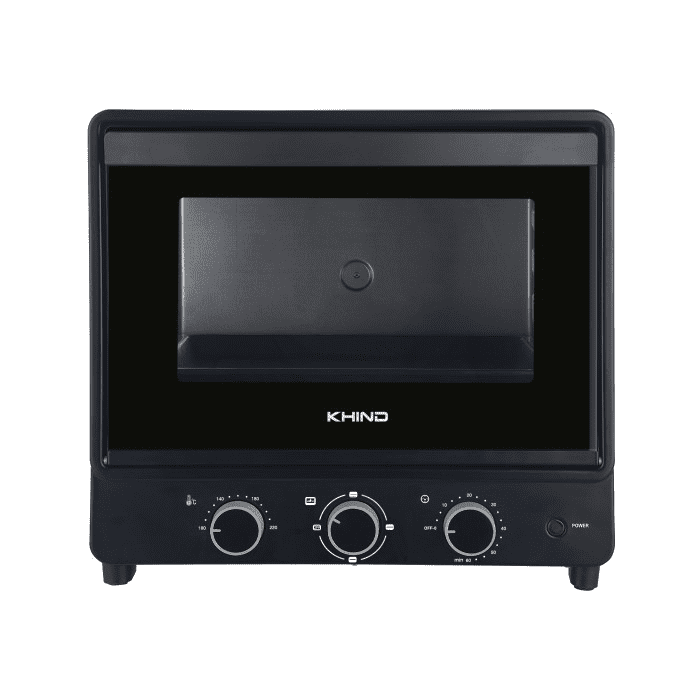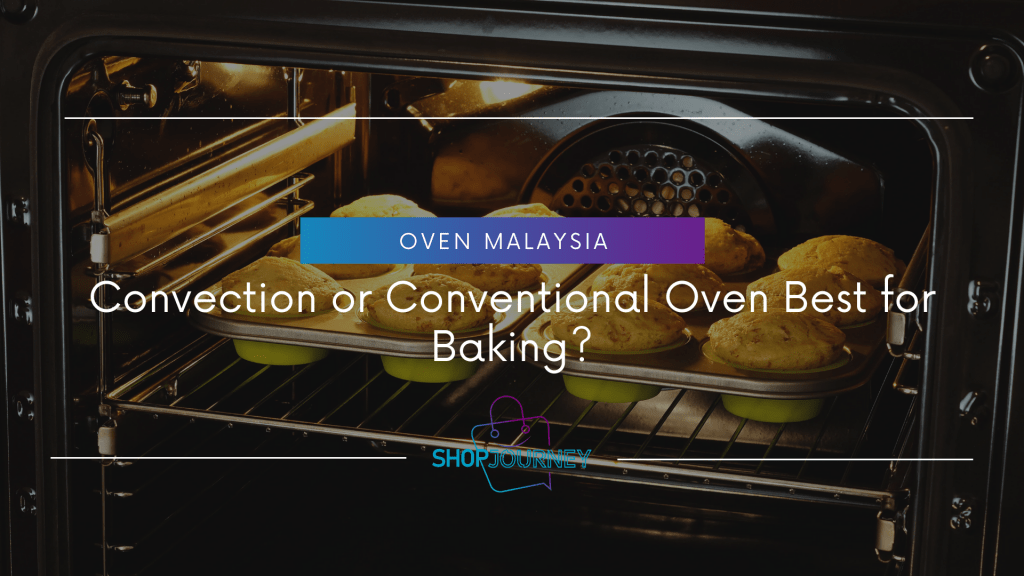In the past, the best toaster ovens with conventional heating were a rare sight in household kitchens. They were more commonly found in professional kitchens and exclusively reserved for seasoned chefs. These days, convection ovens have become a lot more common.
Still, the fact that many of us have become quite familiar with conventional ovens means not a lot of people know how a convection oven works, how to properly use them, or understand why they are a better choice for cooking. This article is a comparison between convection oven vs conventional oven and a comprehensive guide on how to use convection ovens properly and get the most desirable results with your cooking.
What’s The Difference?
What is a Convection Oven?
A convection oven heats food through the scientific process of air convection (hence the name). However, it comes with a powerful fan and an exhaust system. This allows the circulation of hot air inside the oven while the exhaust system vents it back out.
This circulation of hot air within the oven helps to maintain a consistent temperature within the oven and eliminates hot or cool spots. This design also makes the convection oven most ideal for multi-rack cooking. There are different types and models of conventional ovens and they can be powered by electricity or gas just like your regular ovens.
What is a Conventional Oven?
A conventional oven is the regular or traditional oven. It is the most common oven type and is often referred to as a radiant oven because it has heating elements (either at the top or bottom of the oven) that heats food through radiation. The traditional oven does not have a convection fan or exhaust system. Because of this design, the part of your dish closest to the heating elements of the oven will cook the fastest.
Convection Oven vs Conventional Oven
When it comes to the convection vs conventional oven breakdown, the key difference lies in how the oven operates. While both convection and conventional ovens’ jobs are to cook food with trapped heat, ovens that support convection cooking tend to be more beneficial.
When baking with convection ovens, the oven would heat up as usual just like your regular oven. However, the convection fan and the exhaust are also engaged to blow and pull hot air around your food as it cooks. This ensures that the air surrounding food you cook in this oven maintains a steady temperature.
The convection oven’s ability to circulate hot air makes a big difference in the quality of your food. The following are some of the benefits and important talking points when comparing convection and conventional ovens.
Cooking Result
Perhaps the most obvious benefit of a convection oven over regular ovens is in how it cooks food. Convection ovens are known to cook food more evenly. Conventional oven settings are not as user-friendly as those of the convection oven. In conventional ovens, there are hot spots and cold spots depending on the proximity to the heat source. The food closest to the active heating element cooks faster.
This may result in unevenly cooked food since one side cooks faster. This is not the case with a convection oven. Air is circulated in the oven as it operates which ensures equal distribution of heat.
Convection cooking is also noticeably faster. Generally, this type of oven is considered about 25% faster than traditional ovens due to the hot air swirling around the oven to speed up cooking reactions in the dish that is being cooked.
Convection ovens are also the ideal choice for food that requires browning. If you want to achieve a crispy or crunchy texture with what you are cooking, then convection baking will do the trick. The hot dry air produced by the oven caramelizes sugar which gives food a desired crunchy texture.
Preheating Function
As mentioned, one of the major advantages of most convection ovens is that they cook food faster. This means you will enjoy a shorter cook time when you use this type of oven compared to conventional ovens. However, another reason this type of oven also helps to cut cook time is that there is no need to preheat the oven at all or you only need to do so for a very short time. This is because, at lower temperatures, the heat produced by the oven will be higher than that of a conventional oven set to the same temperature.
Convenience
Using a convection oven is also often considered more convenient. Because this type of oven is effective for circulating heat, they are perfect for cooking larger meals (like roasting a whole turkey for Thanksgiving) and will do so faster and more efficiently compared to the conventional alternative.
They also handle multiple dishes more efficiently since placing a large dish on the top rack will not stop heat from getting to the lower rack. Do the same with a regular oven and you might end up with one dish already burned while the other one that is farther away from the heat source is not even ready. The internal fan in a convection oven will ensure that heat moves around and gets to all the dishes in the oven cavity equally.
Flexibility
A convection oven is generally more flexible than a regular oven. It delivers more consistent heat throughout the oven. This means no matter the size of your oven tray or whether you are placing the dish on the upper or lower rack, you are still going to get the same result and the oven will cook the dish right no matter where it is positioned. With the regular oven, you have to pay attention to the heat source and position your dish as close to it as you can.
How to Use a Convection Oven?
When you consider the design of a convection oven, you will discover some peculiarities for how it should be used for cooking. Conventional ovens are the most popular type of ovens. A consequence of this is that most recipes are written based on how they would cook in this type of oven. Therefore, if you will be using a convection oven, there is a need to adapt the cooking style to suit the operation of a convection oven in order to get the best results. here’s how to use a convection oven.
Convert Recipes for Convection Oven
The first thing to do is to determine if the recipe for the dish you want to prepare will have to be adjusted. In some cases, the recipe will already cover this by providing the temperature and cook time for both oven types. However, if this is not the case then you have to do some conversion.
Some ovens make this easy for you as they come with an Auto Conversion feature that automatically adapts the oven setting to the correct temperature and time. However, when this is not the case, then you have to do so manually.
Adjust recipe temperature: if your oven does not have an auto-convert feature then you have to do so manually. Since the heat distribution in a convection oven is more efficient, it means you have to cook at a lower temperature. The simple trick is to subtract 25°F (or its equivalent in Kelvin) from the temperature of the recipe.
Adjust Recipe Time
Another important step is to convert the recipe time. A good quality convection oven typically speeds up the rate of cooking, roasting, or baking your food. This means you have to adjust the cook time to make up for this. A simple way to do this is to multiply the cooking time given by 0.8. This will give you the correct cook time when the meal is cooked with a convection oven.
Preheat Oven
After the conversion, you can now proceed to preheat the oven based on the converted temperature. Generally, you will spend less time on preheating a convection oven than you would with a conventional unit which is one of the many benefits of using this type of oven.
Cook, Roast, or Bake
Finally, you can set the timer for the oven based on the converted time and put your dish in the oven cavity. Convection ovens can be used for different cooking methods like baking or broiling. You can also set your oven to the convection roast setting to get crispy and flavorful food.
Tips for Using a Convection Oven
Using a convection oven is always different from using a regular oven. To get the best results, there are some important tips to keep in mind if you want your dish to come out great.
1. Reduce the Temperature by about 25°F
As earlier explained, the heat produced by a convection oven is always slightly higher than that of a conventional oven. The implication of this is that you cannot use the same temperature provided in a regular recipe book. Generally, it is recommended that you set the temperature of the oven to a lower temperature by about 25°F.
2. Check the Food Frequently Especially Toward the End of Cooking
Another consequence of having a higher cooking efficiency is that your dish will cook a little faster with a convection oven. To avoid getting the food burnt, you may have to check it more frequently especially when the food is almost fully cooked. Waiting for the timer to elapse completely before checking if the food is done can be disastrous. Visually inspecting your food to see if it is done is a much better approach.
3. Avoid Overcrowding the Oven
Although convection ovens are known to be very versatile and can handle more baking dishes than a regular oven, this does not mean you can overcrowd the oven with food. Putting too much food into the oven all at once will block airflow which is crucial to the operation of a convection oven. Of course, the food will still cook, but the process will be less efficient.
4. Use Low-sided or Rimless Baking Sheets or Roasting Pans
Convection ovens work best when you use low-sided or rimless baking pans or baking sheets. This allows free circulation of air for more efficient heating. You will find this instruction particularly important when baking foods like cookies or vegetables and other food where crisping is important. However, this rule may not be so important for foods like cakes where crisping isn’t really desired.
5. Don’t Use a Convection Oven for Certain Foods
While convection ovens are great, they do not work for all foods, especially dishes that are likely to be affected by air movement as the convection fan and exhaust system circulate food. When baking with convection ovens the air circulation may also affect dishes that start as batter such as cake and prevent them from rising properly. It may cause crusting to form on the surface of dishes like custards which may be undesirable.
Get the Most Out of Your Oven
To get the best results from using a convection oven, buying the best oven in Malaysia is the perfect place to begin. One of our top recommendations for the best convection oven for baking that you should check out is the Khind 28L Electric Oven OT2800. This 28-liter oven is a large capacity unit which makes it suitable for a wide range of cooking operations. In addition to a 3-level rack which helps to maximize space, this oven also features a square and vertical oven design which helps to save even more space than similarly-sized units.
This convection oven features both top and bottom heaters which helps to cook food evenly. The heating element of this oven is made from Grade 304 stainless steel which makes it quite durable. The oven unit itself also has a solid build guaranteed to serve your needs for a long time. the Khind OT2800 is also quite affordable which makes it a great choice if you’re looking for budget microwave oven to buy

Pros
- Large capacity oven
- 3-level rack system
- Inner lamp for easy food viewing
- Top and bottom heating
Cons
- No separate controls for upper and lower temperatures
Conclusion
Convection ovens are known to offer a wide range of benefits over regular radiation ovens or conventional ovens. Cook faster with the convection oven and cook food more efficiently. Thanks to the circulation of hot air within the oven, you won’t have to worry about cold or hot spots that may affect the quality of your meals.
However, since most food recipes are developed based on how traditional ovens cook them, there is a need to adjust the temperature and cook time of your dish accordingly. Additionally, when using a quality convection oven like the Khind 28L Electric Oven OT2800, you should be aware of the precautions to take to ensure that your dish turns out just great.




